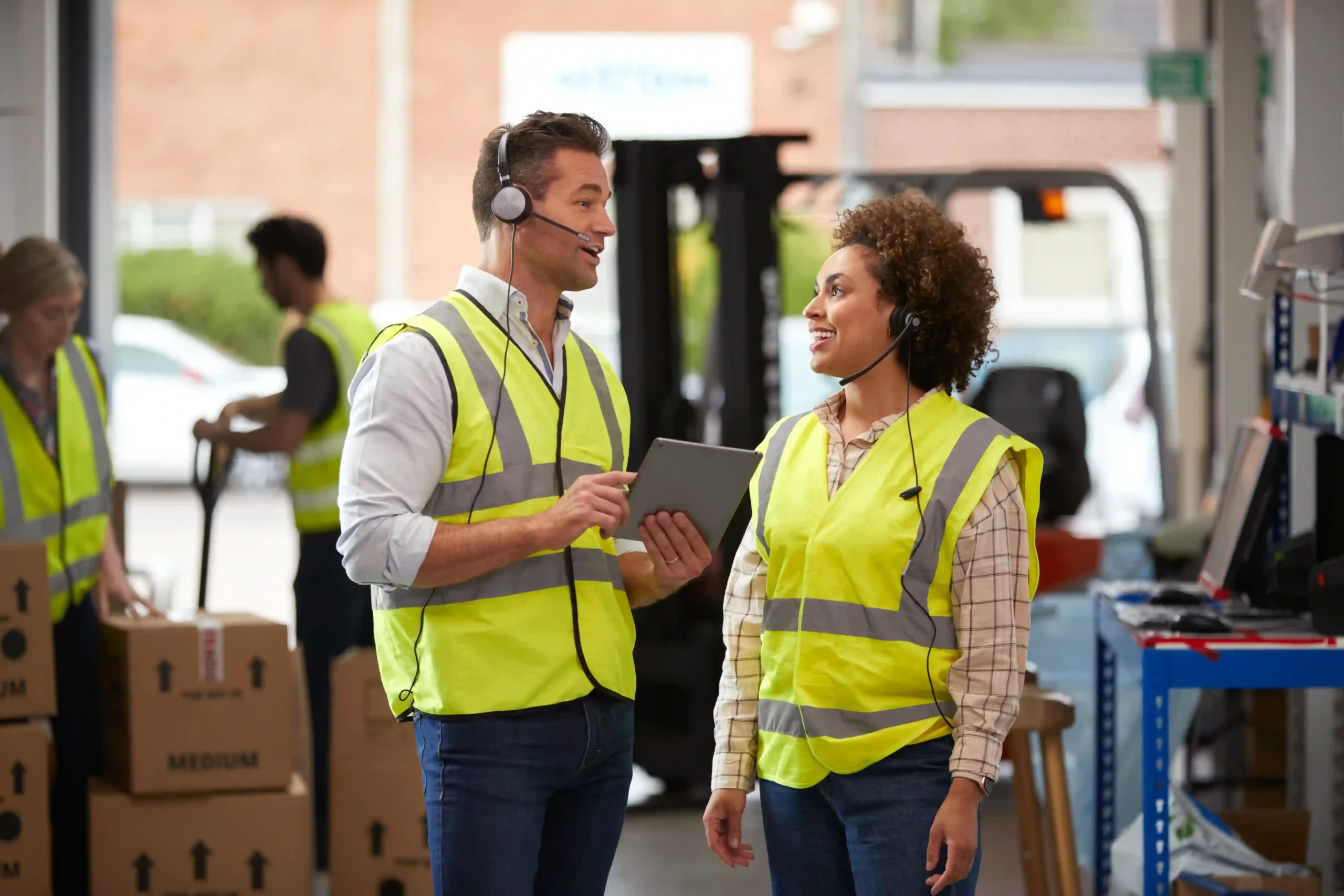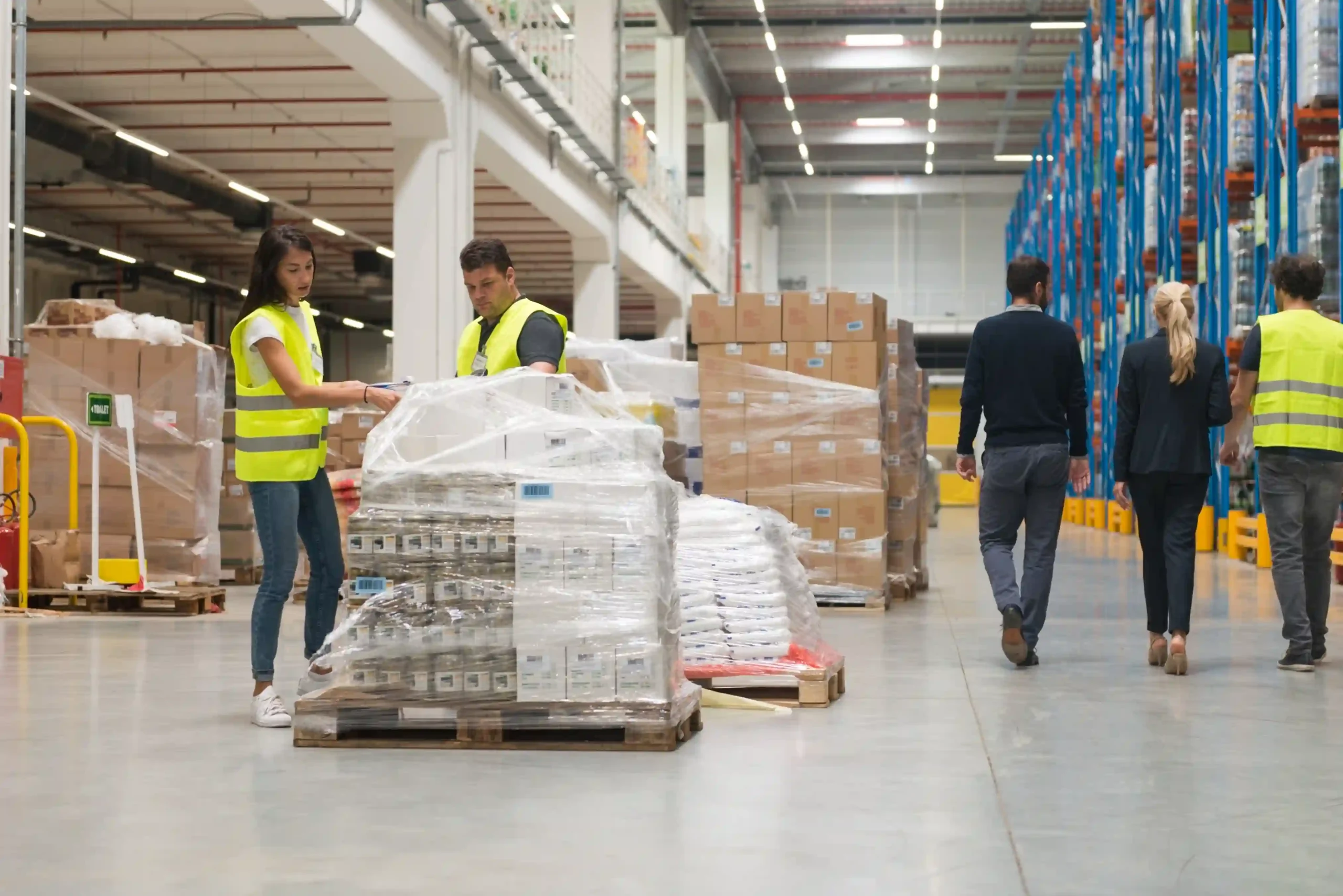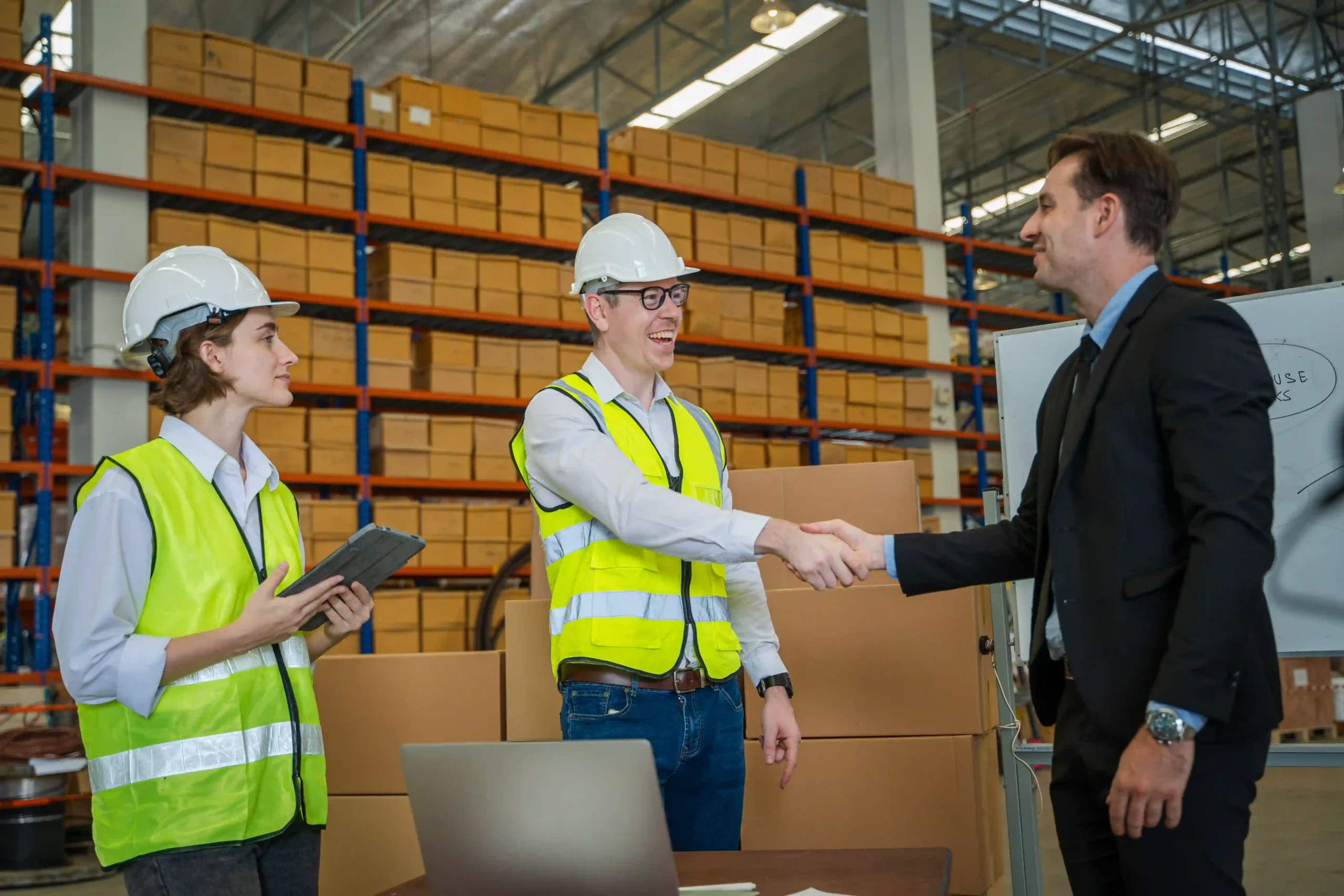In our 35+ years leading Tri-Link FTZ, one of the most common questions I hear from our clients—especially those expanding into ecommerce or global markets—is “What is the distribution logistics meaning, exactly?” Put simply, it refers to the movement, storage, and final delivery of goods from the manufacturer to the end user.
That includes everything from transporting items to warehouses, managing inventory, picking and packing orders, and coordinating last-mile delivery. It’s not just about getting packages out the door—it’s about getting the right package to the right person at the right time in the most efficient way possible.
At its core, distribution logistics is the engine that powers customer satisfaction. And in today’s on-demand world, where consumers expect two-day delivery and accurate tracking, having a smart logistics strategy is more important than ever.
While the term “logistics” can include procurement, inbound freight, and supplier management, distribution logistics zooms in on the outbound process—the final stage where your product touches your customer. It’s where all your supply chain planning either delivers results—or breaks down entirely.

Whether you’re running a local apparel brand or a multinational electronics company, how you manage your distribution logistics can make or break your growth. When done right, it becomes a competitive advantage.
When done wrong, it leads to delays, unhappy customers, and unnecessary costs. In our experience at Tri-Link FTZ, companies that prioritize their distribution strategy early on scale faster and with less friction.
That’s because efficient distribution means smoother fulfillment, fewer customer complaints, and better inventory flow. Beyond cost savings, the meaning of distribution logistics lies in its ability to create trust.
Customers rarely see your warehouse or your shipping software—they see their package on time. That’s why it’s so important.
A delayed order could mean a lost sale. A late B2B delivery might disrupt a production line.
And in industries like healthcare or perishable goods, timing is everything. Distribution logistics isn’t a background operation—it’s front and center in delivering your brand promise.
As global shipping becomes more complex, with cross-border regulations, port congestion, and fuel fluctuations, distribution logistics is where businesses can simplify, streamline, and scale.
To understand how to optimize distribution logistics, let’s walk through its major components—each one a vital link in the chain from your warehouse to your customer’s doorstep.
Route optimization software and AI-powered freight platforms are now helping reduce delivery times and cut fuel costs.
It’s where inventory is received, stored, and prepped for delivery. At Tri-Link, we use Foreign Trade Zone warehouses to defer duties and better manage inventory turnover, which has helped clients free up cash flow while maintaining supply.
Mistakes in this step—like mispicks or damaged items—are costly, so automation and quality checks are critical.
Businesses are now using micro-fulfillment centers, smart lockers, and even drone delivery pilots to reduce last-mile costs while speeding things up.
Each of these areas can be managed in-house or outsourced to third-party logistics providers like us. The key is alignment—your logistics should fit your brand’s promise, budget, and growth plan.
There’s no one-size-fits-all model in distribution logistics. Based on our clients’ needs and infrastructure, we often guide them toward one of three distribution channels: direct, indirect, or hybrid.
In direct distribution, the manufacturer ships directly to the customer. This is common in ecommerce or DTC brands.
You have full control over the experience, but it demands more logistics investment. In indirect distribution, products go through third parties—like wholesalers, retailers, or 3PLs—before reaching the customer.
This can reduce your logistical burden, especially if you’re scaling. Then there’s the hybrid model, which combines both.
For example, a beauty brand might ship DTC from a warehouse while also stocking products at a major retailer. At Tri-Link FTZ, we help clients design hybrid distribution systems using our FTZ warehouse network.
By placing inventory near key markets and combining fulfillment methods, they reduce transit time and shipping costs. Flexibility is everything in modern logistics—and hybrid gives you that edge.

No matter how strong your strategy is, distribution logistics will test you. Over the decades, we’ve seen some common challenges—and helped clients navigate them with smart planning and better tools.
One major hurdle is rising transportation costs. Fuel prices, driver shortages, and global disruptions can throw shipping budgets off course.
To counter this, we often recommend consolidating shipments and negotiating volume discounts with carriers through our FTZ distribution centers. Another challenge is inventory mismanagement.
Either you’re overstocked and paying for excess storage, or you’re out of stock and losing sales. That’s where demand forecasting tools and connected IMS systems come into play.
They help predict trends and keep stock levels balanced. Delivery delays, especially in last-mile segments, are another issue.
Real-time tracking and flexible delivery options (like weekend or after-hours delivery) are becoming essential—not optional. We also see businesses struggling with returns.
Reverse logistics can be messy and expensive if not planned for. Having a clear returns policy and a streamlined process (even through your 3PL) prevents damage to both your products and your reputation.
Finally, compliance and customs issues plague cross-border shipments. That’s where our FTZ expertise becomes invaluable.
With over 35 years in the space, we’ve helped hundreds of companies avoid penalties and delays by ensuring their documentation and processes are airtight.
Over the past decade, the digital transformation of logistics has been one of the most exciting developments we’ve seen at Tri-Link FTZ. When I think back to how we managed distribution in the early 90s—manual tracking, handwritten bills of lading—it’s night and day compared to what’s possible today.
The integration of technology into distribution logistics has not only improved speed and accuracy but has also helped businesses scale without drastically increasing overhead. One of the most impactful tools is real-time shipment tracking.
Clients can now see exactly where their products are in transit, which has cut down on “where’s my order” calls and increased delivery accuracy. We’ve integrated these systems into our client dashboards so they can react quickly if there’s an unexpected delay or rerouting needed.
Then there’s AI-powered demand forecasting. Using historical data and seasonal trends, these tools help predict inventory needs weeks or months in advance.
This helps avoid overstocking and understocking—both of which can cripple a fulfillment operation. We’ve had clients reduce their warehousing costs by 15–20% just by implementing smart forecasting systems.
Warehouse automation is another big win. Robotic picking systems, smart conveyor belts, and barcode scanning have made order fulfillment more efficient and less error-prone.
In our FTZ facilities, automation has allowed us to increase throughput without expanding our physical footprint—a huge benefit in today’s real estate market. We’re also big advocates of cloud-based 3PL dashboards.
These platforms allow our clients to log in anytime, view their inventory levels, track shipments, manage returns, and analyze fulfillment performance. It gives them a bird’s-eye view of their entire distribution network—without needing to manage it in-house.
And finally, ERP and API integrations tie everything together. Your ecommerce platform, inventory system, accounting software, and logistics tools all speak to each other, streamlining operations and reducing manual errors.
The bottom line? Technology doesn’t just make distribution logistics faster—it makes it smarter.
And in today’s landscape, smart logistics is what separates a growing brand from one that’s struggling to keep up. Read more here.
One of the most common concerns I hear from new clients is, “We know our distribution logistics need work, but we can’t afford a full overhaul.” The good news?
You don’t need one. With the right steps, you can make big improvements through small, strategic changes.
Start by assessing your current pain points. Are you losing money on shipping?
Are your customers complaining about delays? Are your storage costs too high?
This kind of audit helps you pinpoint where to focus your efforts. Then, look at your tech stack.
Sometimes the simplest improvement is implementing better software. A modern inventory management system can replace outdated spreadsheets and give you more control over stock levels.
Route optimization tools can reduce delivery costs by suggesting faster paths. You can also outsource selectively.
You don’t have to hand over your entire supply chain. Many of our clients begin by outsourcing only their final-mile delivery or overflow warehousing.
Over time, as they gain trust in the system, they expand our role in their logistics. Another improvement we recommend is regional fulfillment centers.
Instead of shipping everything from one location, splitting inventory between two or three strategic regions can slash delivery times and shipping costs. We help clients do this using our FTZ locations, giving them flexibility while deferring or reducing customs duties.
Lastly, invest in your team’s logistics literacy. Sometimes the best improvement is simply helping your internal staff understand fulfillment workflows, shipping options, and inventory controls better.
A well-trained team can spot inefficiencies early and act fast. Distribution logistics isn’t an “all or nothing” game.
It’s a continuous process of fine-tuning, testing, and adapting—and we’ve spent 35 years helping companies do just that.

When it comes to distribution logistics, the numbers don’t lie. Whether you’re running your own fulfillment or partnering with a 3PL like Tri-Link, tracking the right metrics helps you identify what’s working and what’s not.
Here are the key performance indicators we focus on with our clients.
On-Time Delivery Rate: This tells you what percentage of your orders arrive on or before their promised date. A low rate often means delays in fulfillment or shipping—and unhappy customers.
Order Accuracy Rate: This measures how often the correct items are picked, packed, and shipped. Mistakes here lead to returns, refunds, and frustrated buyers.
Inventory Turnover Ratio: This shows how often you sell and replace inventory over a period of time. High turnover means you’re not sitting on unsold products (and paying for storage unnecessarily).
Average Fulfillment Cost Per Order: This includes labor, packaging, storage, and shipping. Keeping this cost in check is key to maintaining margins—especially for ecommerce businesses.
Return Rate and Processing Time: Tracking how often customers return products and how quickly those returns are processed helps assess your fulfillment accuracy and customer satisfaction.
We generate weekly reports on these metrics for our clients through their 3PL dashboards, so they always have visibility into their logistics performance. This isn’t just for tracking progress—it’s for guiding decisions.
If your on-time rate drops, you’ll want to review shipping carriers. If your fulfillment costs spike, you might need to renegotiate storage or shipping rates.
Metrics are how you turn logistics from guesswork into strategy.
At Tri-Link FTZ, we’ve had the privilege of working with businesses across every major industry—apparel, food and beverage, medical equipment, consumer electronics, and more. Here are a few success stories that highlight what strong distribution logistics can really do.
One apparel startup came to us with a 30% return rate due to shipping errors from a prior provider. Within 90 days of switching to our FTZ-based distribution model, their return rate dropped to under 8%.
We implemented automated quality control checks during fulfillment and optimized their pick-pack process. Their customer reviews skyrocketed.
A medical equipment distributor faced customs delays that slowed deliveries to hospitals by weeks. After moving their import operations to our FTZ warehouse, they deferred duties and pre-positioned inventory in-market, eliminating the bottleneck entirely.
This helped them respond faster during time-sensitive orders, especially during the early stages of the pandemic. An electronics company struggled with rising shipping costs.
Their orders originated from a single warehouse in the Midwest, and shipping to the West Coast was killing their margins. We helped them open a satellite fulfillment hub in our FTZ near Los Angeles.
With just that change, their average delivery time dropped by 2.1 days, and they saved 19% on shipping in the first quarter. These stories aren’t outliers—they’re examples of how targeted improvements in distribution logistics can deliver real business outcomes. Read more here.
What is the role of logistics in distribution?
Logistics handles the entire flow of goods from supplier to customer, but distribution is the outbound half—focused on delivering goods from your warehouse to your customer as quickly and cost-effectively as possible.
What are the different types of distribution logistics?
There are three main types: direct (selling and shipping to customers yourself), indirect (using retailers or wholesalers), and hybrid (a mix of both). Each comes with unique logistics strategies.
What is a distribution logistics strategy?
It’s your plan for storing, handling, and delivering your products—from where you place inventory, to how you fulfill orders, to which couriers you use. A strong strategy balances speed, cost, and flexibility.
Can I outsource just part of my distribution logistics?
Absolutely. Many of our clients only outsource specific functions like last-mile delivery, warehousing, or international shipments. You can scale your outsourcing over time based on performance and budget.
How do I calculate my distribution logistics costs?
Total your warehousing, labor, packaging, transportation, software, and return processing expenses. Divide that by the number of orders fulfilled to get an average cost per order.
After more than three decades in the logistics industry, I’ve seen one consistent truth: distribution logistics is the silent powerhouse behind successful businesses. Whether you’re shipping a single product from your garage or distributing inventory across continents, how you manage that journey affects every part of your operation—from profitability to customer satisfaction.
Understanding the distribution logistics meaning goes beyond knowing how packages move. It’s about recognizing the strategy, systems, and technologies that turn your supply chain into a competitive advantage.
And while the terminology and tools have evolved over the years, the goal remains the same: get the right product to the right place at the right time—efficiently and affordably. At Tri-Link FTZ, we’ve built our business around helping companies like yours do exactly that.
With the unique advantages of Foreign Trade Zones, world-class 3PL infrastructure, and a dedication to tailored solutions, we take the complexity out of logistics—so you can focus on growth. If you’re ready to take the next step toward optimizing your distribution network, we’re here to help.
Reach out to our team for a custom strategy built on experience, innovation, and a deep understanding of what logistics success looks like in today’s world.
Share this article
We have other resources available upon request as well as one-on-one support and personalized answers, just like our services.
Simply contact us anytime and we’ll get back to you to answer your questions and provide meaningful answers that show you how Tri-Link supports your logistics, reduces costs, and accelerates efficiency.
Tri-Link delivers exceptional FTZ and 3PL services tailored to your global trade needs.
Our solutions combine innovation, quality, and efficiency to exceed your expectations and meet your specific requirements.